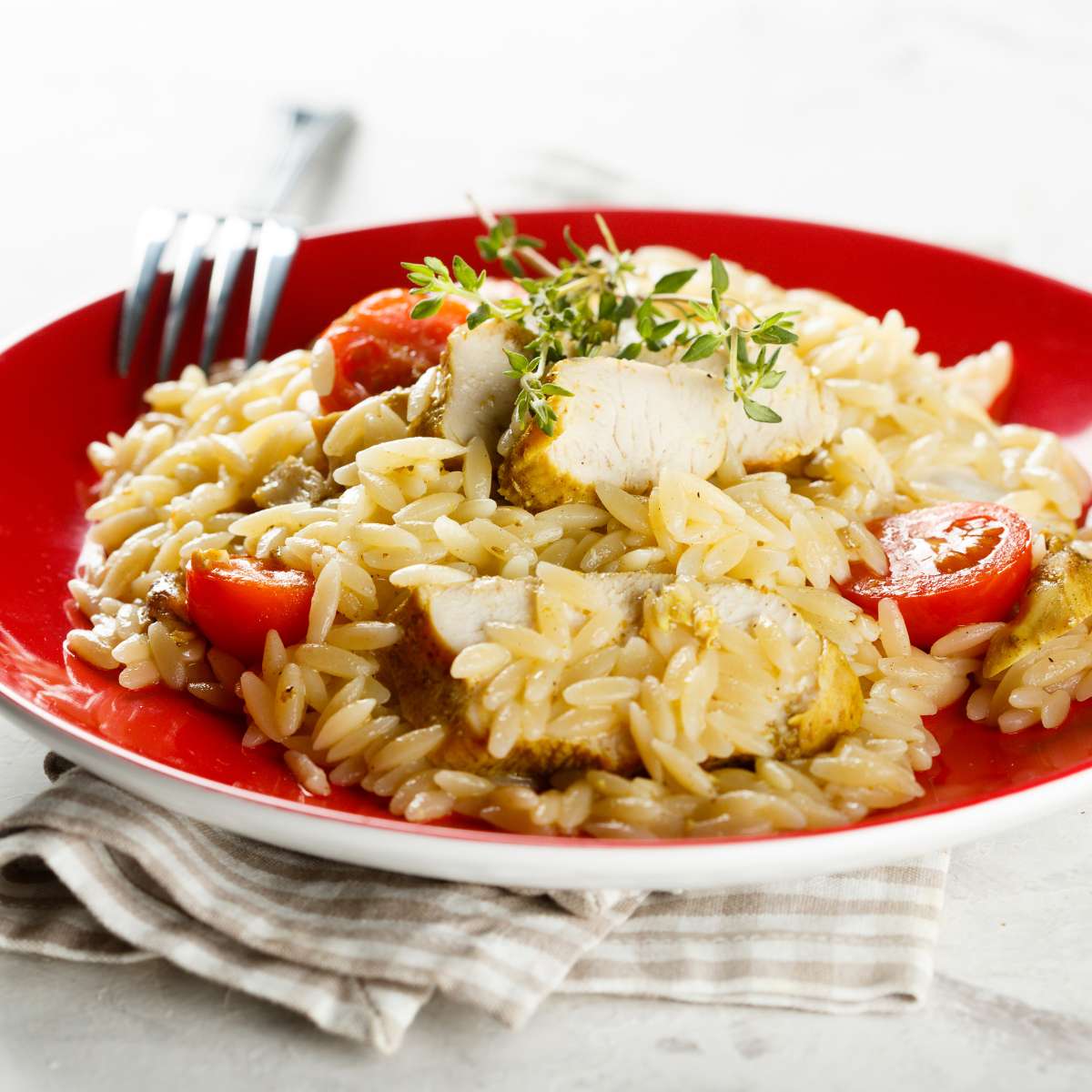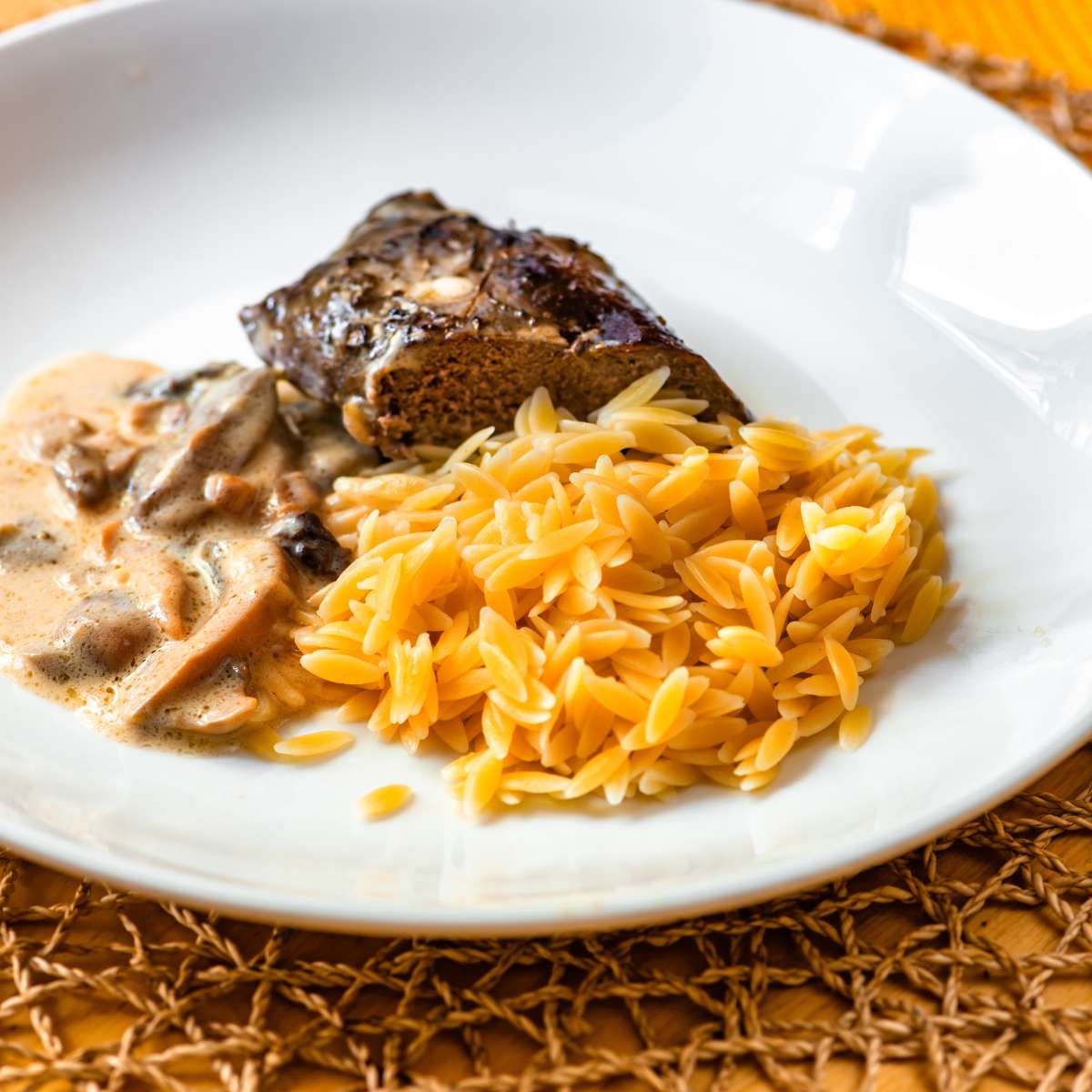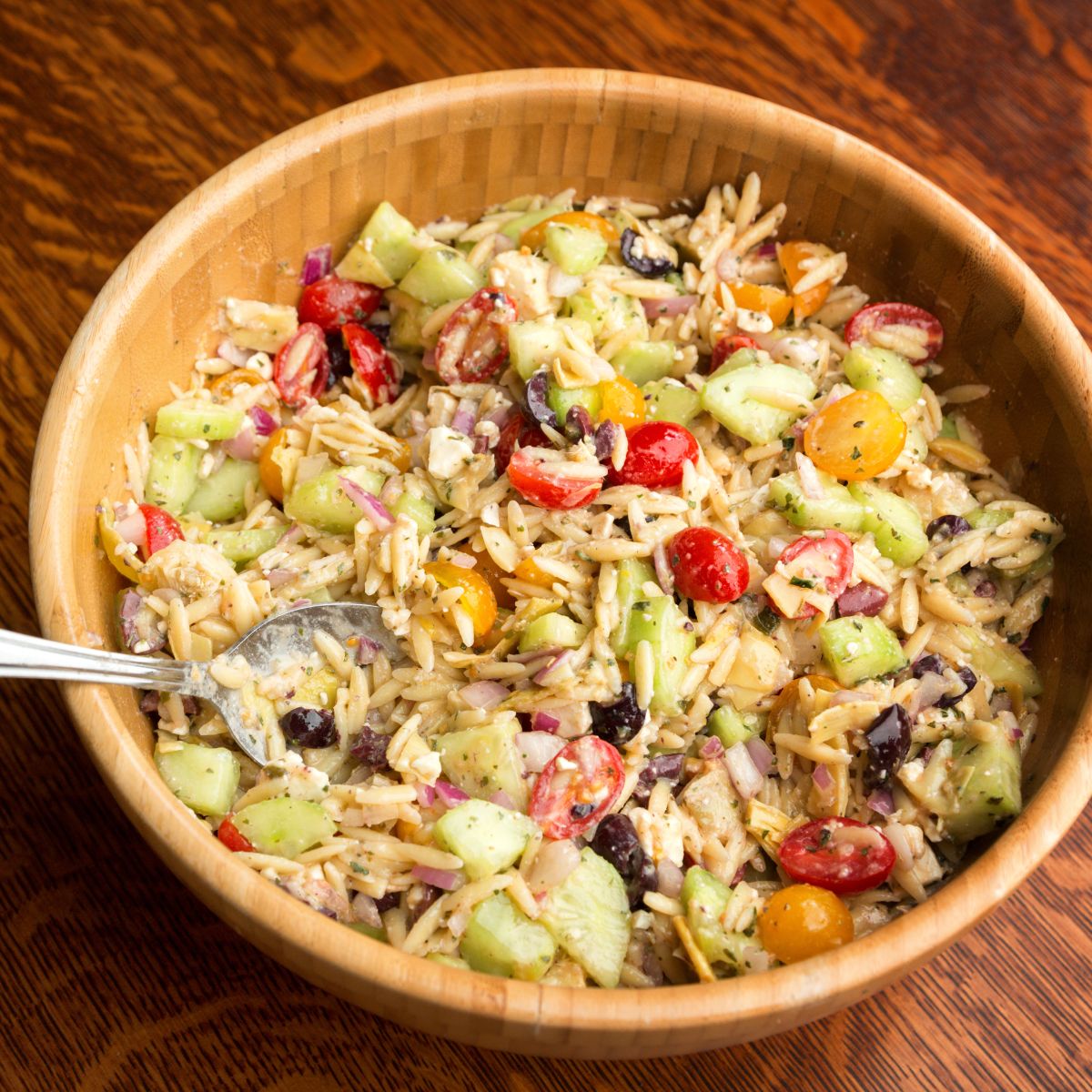What exactly is orzo pasta, and why should it be a staple in your pantry? Often mistaken for rice due to its small, grain-like shape, orzo is a versatile pasta that holds up well in a myriad of dishes, from hearty soups to refreshing salads. Known for its ability to absorb flavors and its delightful texture, orzo is a favorite for cooks looking to whip up quick and delicious meals.
This versatile pasta is not just a staple in Italian cuisine; it’s also found in Greek, Turkish, and even Middle Eastern dishes, each utilizing its ability to complement both delicate and intense flavors.
Read on to discover the unique qualities of orzo, how it differs from other pastas, and why it might just become your new favorite ingredient.
What Is Orzo Pasta
Orzo pasta, often mistaken for a grain, is a small, rice-shaped pasta that’s as versatile as it is delightful. Originating in Italy, orzo is traditionally made from semolina flour, which is derived from durum wheat—just like what most pasta is typically made of. This gives it a firm texture that holds up well during cooking. Its unique shape and texture make it a popular choice not only in Italian kitchens but also across various culinary landscapes around the world.
From being a star in creamy Italian risottos to adding substance to Greek salads with tangy feta, orzo adapts beautifully to different tastes and ingredients. In Turkish cuisine, it’s commonly used in soups, where it absorbs the flavors of the broth, enriching every spoonful. Its ability to meld into the culinary traditions of different regions makes orzo a truly global pasta, enjoyed in dishes ranging from simple salads to hearty stews and soups.
This pasta’s charm lies in its simplicity and its ability to bridge diverse culinary practices, making it a pantry staple for those who appreciate a global approach to cooking. Whether it’s tossed with vegetables, cheese, herbs, or cooked into a savory broth, orzo pasta offers a delightful texture and versatility that can transport your dishes across continents.
What Is Orzo Pasta: Comparison to Rice and Barley
Orzo, a type of pasta shaped like rice, rice itself, and barley, each offers unique textures, nutritional profiles, and culinary applications. Whether you’re considering their use in dishes for their texture, nutritional value, or gluten content, this comparison will help you decide which grain or pasta best suits your cooking needs.
| Comparison | Orzo | Rice | Barley |
|---|---|---|---|
| Texture | Firm, pasta-like | Soft, fluffy | Chewy, grainy |
| Protein Content | Higher | Varies (lower in white rice) | Lower |
| Caloric Density | Denser | Less dense | Generally lower than orzo and rice |
| Gluten Content | Contains gluten (wheat-based) | Gluten-free | Contains gluten |
| Culinary Uses | Salads, soups, pilafs | Sushi, risotto, pilaf | Soups, stews, salads |
Breaking Down the Nutritional Profile of Orzo Pasta

Orzo, that high-carb pasta that confuses the best of us with its rice-like appearance, is not just a tasty addition to your meals; it’s packed with essential nutrients that deserve a spotlight.
First off, orzo is low in fat and cholesterol-free, making it a heart-healthy choice for those looking to manage their cardiovascular health. It’s also a good source of several vital minerals such as iron, which helps in maintaining your energy levels, and magnesium, important for muscle function and overall health.
Rich in B vitamins, particularly vitamin B3, orzo supports brain function and cognitive health. For those monitoring their blood sugar levels, the low glycemic index of orzo makes it a favorable option, providing energy without the spikes in blood glucose.
And hey, if you’ve been swiping left on the meat, you’ll be glad to know that orzo offers plant-based protein that could make a vegetarian’s or vegan’s heart sing. Opting for whole grain orzo can increase these benefits, particularly in terms of fiber content, which aids in digestion and enhances nutrient absorption.
Traditional Orzo vs. Whole Grain Orzo
If you’re considering orzo for its nutritional benefits, comparing traditional and whole grain varieties can be particularly enlightening. Whole grain orzo not only offers all the benefits of traditional orzo, but with added fiber, it supports a healthier digestive system and provides a more nutrient-dense option for your meals. Here’s a detailed comparison to help you make an informed choice:
| Nutrient | Traditional Orzo (per 1 cup) | Whole Grain Orzo (per 1 cup) |
|---|---|---|
| Calories | 200 | 180 |
| Fat | 1g | 1.5g |
| Cholesterol | 0mg | 0mg |
| Carbohydrates | 42g | 39g |
| Dietary Fiber | 3g | 7g |
| Protein | 7g | 8g |
| Iron | 10% DV | 15% DV |
| Magnesium | 8% DV | 20% DV |
| Zinc | 8% DV | 10% DV |
Mastering the Art of Cooking Orzo Pasta

Are you curious about the best ways to cook orzo pasta? This versatile little pasta shapes up as an ideal base for numerous dishes, whether you’re looking to craft a delicate salad or a hearty entree. Follow these tips to cook orzo perfectly every time, tailoring it to any recipe you have in mind.
Boiling Orzo: A Classic Approach
Boiling is the most straightforward method to cook orzo. Start by bringing a large pot of salted water to a vigorous boil. Add the orzo and cook it for about 8-10 minutes. You’ll want to aim for an al dente texture, which means the orzo should be tender but still firm to the bite. This method is ideal if you’re adding orzo to salads or serving it with a sauce.
The One-Pot Method and Its Creamier Outcome
For a creamier texture, try the one-pot method. Combine one part orzo with two parts water or broth in a pot. Bring it to a simmer, stirring occasionally, until the orzo is soft and has absorbed all the liquid, which typically takes about 15 minutes. This method is similar to cooking risotto and results in a creamy, comforting dish that’s perfect on its own or as a side.
Final Touches for Perfection
Regardless of the cooking method, consider finishing your orzo with a light drizzle of olive oil and a quick stir to prevent it from sticking. This step ensures your orzo remains fluffy and clump-free, ready to be incorporated into any dish from vibrant salads to cozy soups or casseroles.
Embracing the Versatility of Orzo in the Kitchen
Orzo pasta stands out for its incredible adaptability in the kitchen, fitting into a wide range of dishes that highlight its unique texture and subtle flavor. From soups and salads to casseroles and side dishes, orzo easily absorbs flavors and complements a variety of ingredients.
- In Soups: Orzo adds a delightful texture to broths and soups, swelling slightly as it cooks and absorbing the surrounding flavors. It’s perfect in everything from a simple chicken noodle soup to a more robust minestrone.
- As a Salad Base: Chilled orzo salad tossed with fresh vegetables, herbs, and a zesty dressing makes for a refreshing summer dish. Combine it with ingredients like cherry tomatoes, cucumber, feta cheese, and olives for a Mediterranean flair.
- In Casseroles: Orzo works wonderfully in baked dishes. Layer it with marinara sauce, mozzarella, and ground meat for a pasta bake that’s sure to please or mix it with vegetables and a creamy sauce for a vegetarian option.
- Side Dishes: Replace rice or couscous with orzo for a quick, easy side that pairs well with grilled meats or vegetables. Sauté it with garlic and mix in parmesan cheese and herbs for a simple yet delicious accompaniment.

Each use showcases orzo’s ability to blend seamlessly into a multitude of culinary contexts, making it a staple in both quick weeknight dinners and elaborate holiday meals.
Exploring Substitutes for Orzo Pasta
Looking for alternatives to orzo pasta? Whether it’s for dietary restrictions, availability, or just to mix things up in the kitchen, there are several substitutes that can mimic orzo’s shape and texture, and work well in a variety of dishes. Here’s a breakdown of some excellent orzo substitutes, each offering unique textures and suited for specific culinary uses:
- Gluten-Free Orzo (Rice, Corn, Quinoa): Designed to mimic orzo’s firmness, these gluten-free alternatives work well in cold salads or as a base for hot dishes, accommodating those with gluten sensitivities.
- Rice (White, Brown, Arborio): Offers a grainier texture than orzo; white or brown rice fits well in soups and casseroles, while Arborio is ideal for creamy dishes like risotto.
- Quinoa: This small, granular substitute brings a nutty flavor and a slight crunch. It’s also packed with protein and fiber, making it a nutritious choice for salads or as a side dish.
- Ditalini: This small tube-shaped pasta has a texture close to orzo when cooked and is excellent in soups and stews where the pasta’s texture is highlighted.
- Pastina: A tiny, star-shaped pasta that softens significantly, making it perfect for light broths or as a comforting dish for kids.
- Stelline: Another small, star-shaped pasta that softens in broths, ideal for lighter, clear soups where it’s visible.
- Pearl Couscous: Also known as Israeli couscous, it’s chewier and larger than traditional couscous, great in salads, pilafs, or stews where it absorbs surrounding flavors effectively.
As you can see, the pasta possibilities are endless, and there’s a world of orzo alternatives at your fingertips. So next time the pasta pot’s calling, you’ll be ready to answer with a flavorful and, perhaps, gluten-free twist. Go forth and boil, mix, and match with confidence!
Conclusion
Orzo pasta, with its tiny rice-like appearance and remarkable versatility, is truly a culinary chameleon. Whether it’s used in a simmering pot of soup, mixed into a vibrant salad, or served as a base for a saucy main dish, orzo adapts beautifully to complement any flavor. It’s this adaptability that makes orzo not just a pasta but a bridge between various cooking styles and traditions.
As we’ve explored the various facets of what makes orzo special, hopefully, you’re inspired to experiment with it in your own kitchen. Embrace the simplicity and potential of orzo, and let it transform your cooking adventures.
FAQ
Can orzo be used as a substitute for rice?
Yes, orzo can be a great substitute for rice in dishes like pilafs or risottos because it has a similar texture and absorbs flavors well.
What are some popular dishes that feature orzo?
Popular orzo dishes include orzo salad with feta and olives, lemon orzo with parmesan and peas, and orzo soup with vegetables.
I’ve got this bag of orzo staring at me from the pantry. How do I cook it?
Cooking orzo is as easy as pie — easier, actually. Boil some salted water, throw your orzo in, and let it cook until it’s al dente, usually about 8 to 10 minutes. Want a pro tip? Drizzle it with some olive oil post-boil to keep those grains all sprightly and non-clumping.
Is orzo a good option for vegan and vegetarian diets?
Oh, absolutely! Orzo’s got plant-based protein cred, so it’s a hearty addition to your meatless meals. Just make sure to jazz it up with your favorite veggies and spices, and you’ll be all set for a taste bud-pleasing feast!
How do you store cooked orzo?
Cooked orzo can be stored in an airtight container in the refrigerator for up to 5 days or frozen for up to 3 months.


